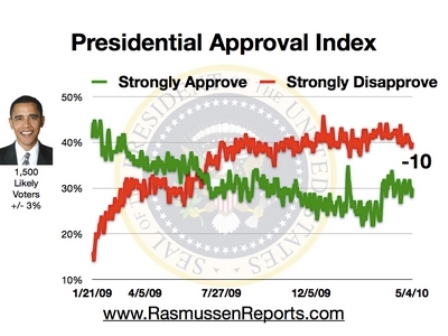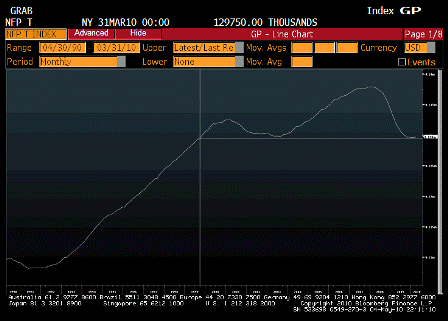Looks like the plan is for a straight euro loan from the IMF to Greece:
“IMF support will be provided under a three-year €30 billion (about $40 billion)Stand-By Arrangement (SBA)—the IMF’s standard lending instrument. In addition, euro area members have pledged a total of €80 billion (about $105 billion) in bilateral loans to support Greece’s effort to get its economy back on track. Implementation of the program will be monitored by the IMF through quarterly reviews.”
FACTSHEET
IMF Stand-By Arrangement
November 23, 2009
In an economic crisis, countries often need financing to help them overcome their balance of payments problems. Since its creation in June 1952, the IMF’s Stand-By Arrangement (SBA) has been used time and again by member countries, it is the IMF’s workhorse lending instrument for emerging market countries. Rates are non-concessional, although they are almost always lower than what countries would pay to raise financing from private markets. The SBA was upgraded in 2009 to be more flexible and responsive to members countries’ needs. Borrowing limits were doubled with more funds available up front, and conditions were streamlined and simplified. The new framework also enables broader high-access borrowing on a precautionary basis.
Lending tailored to member countries’ needs
The SBA framework allows the Fund to respond quickly to countries’ external financing needs, and to support policies designed to help them emerge from crisis and restore sustainable growth.
Eligibility. All member countries facing external financing needs are eligible for SBAs subject to all relevant IMF policies. However, SBAs are generally used by middle income member countries more often, since low-income countries have a range of concessional instruments tailored to their needs.
Duration. The length of a SBA is flexible, and typically covers a period of 12–24 months, but no more than 36 months, consistent with addressing short-term balance of payments problems.
Borrowing terms. Access to IMF financial resources under SBAs are guided by a member country’s need for financing, capacity to repay, and track record with use of IMF resources. Within these guidelines, the SBA provides flexibility in terms of amount and timing of the loan to help meet the needs of borrowing countries. These include:
• Normal access. Borrowing limits were recently doubled to give countries access of up to 200 percent of quota for any 12 month period, and 600 percent of total credit outstanding (net of scheduled repurchases).
• Exceptional access. The IMF can lend amounts above normal limits on a case-by-case basis under its Exceptional Access policy, which entails enhanced scrutiny by the Fund’s Executive Board. During the current global economic crisis, countries facing acute financing needs have been able to tap exceptional access SBAs.
• Front-loaded access. The new SBA framework provides increased flexibility to front load funds where warranted by the strength of the country’s policies and the nature of its financing needs.
• Rapid access. Fund support under the SBA can be accelerated under the Fund’s Emergency Financing Mechanism, which enables rapid approval of IMF lending. This mechanism was utilized in several instances during the recent crisis.
Precautionary access. The new SBA framework has expanded the range of high access precautionary arrangements (HAPAs), a type of insurance facility against very large financing needs. Precautionary arrangements are used when countries do not intend to draw on approved amounts, but retain the option to do so should they need it. Three HAPAs, with Costa Rica, El Salvador, and Guatemala, were approved during the crisis.
Fewer conditions, focus on objectives
When a country borrows from the IMF, it agrees to adjust its economic policies to overcome the problems that led it to seek funding in the first place. These commitments, including specific conditionality, are described in the member country’s letter of intent (which often has a memorandum of economic and financial policies).
Building on earlier efforts, the IMF has further reformed the conditions of its lending to focus on criteria that are measurable and observable. These changes include:
Quantitative conditions. Member countries progress is monitored using quantitative program targets. Fund disbursements are tied to the observance of such targets. Examples include targets for international reserves and government deficits or borrowing, consistent with program goals.
Structural measures. The new SBA framework has eliminated structural performance criteria. Instead, progress in implementing structural measures that are critical to achieving the objectives of the program are assessed in a holistic way in the context of program reviews.
Frequency of reviews. Regular reviews by the IMF’s Executive Board play a critical role in assessing performance under the program and allowing the program to adapt to economic developments. The SBA framework allows flexibility in the frequency of reviews based on the strength of the country’s policies and the nature of its financing needs.
Lending terms
Repayment. Repayment of borrowed resources under the SBA are due within 3¼-5 years of disbursement, which means each disbursement is repaid in eight equal quarterly installments beginning 3¼ years after the date of each disbursement.
Lending rate. The lending rate is tied to the IMF’s market-related interest rate, known as the basic rate of charge, which is itself linked to the Special Drawing Rights (SDR) interest rate. Large loans carry a surcharge of 200 basis points, paid on the amount of credit outstanding above 300 percent of quota. If credit remains above 300 percent of quota after three years, this surcharge rises to 300 basis points, and is designed to discourage large and prolonged use of IMF resources.
Commitment fee. Resources committed under all SBAs are subject to a commitment fee levied at the beginning of each 12 month period on amounts that could be drawn in the period (15 basis points for committed amounts up to 200 percent of quota, 30 basis points on committed amounts above 200 percent and up to 1,000 percent of quota and 60 basis points on amounts exceeding 1,000 percent of quota). These fees are refunded if the amounts are borrowed during the course of the relevant period. As a result, if the country borrows the entire amount committed under an SBA, the commitment fee is fully refunded, while no refund is made under a precautionary SBA under which countries do not draw.
Service charge. A service charge of 50 basis points is applied on each amount drawn.



